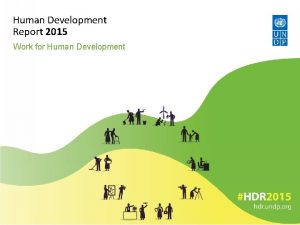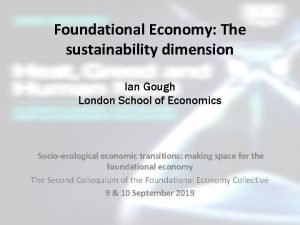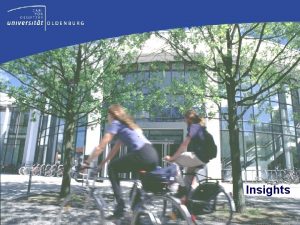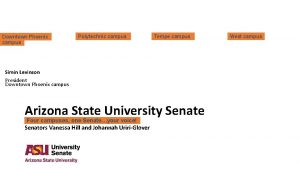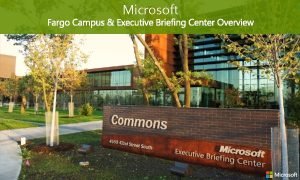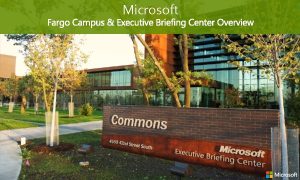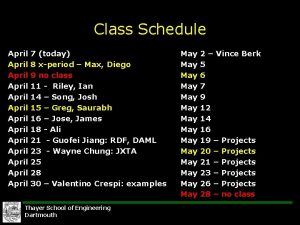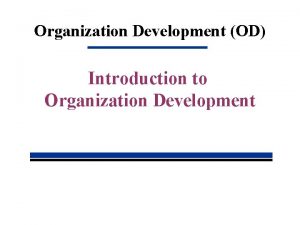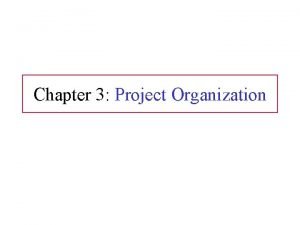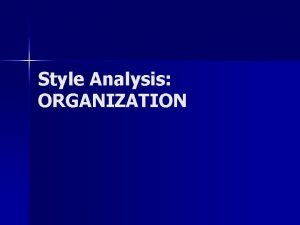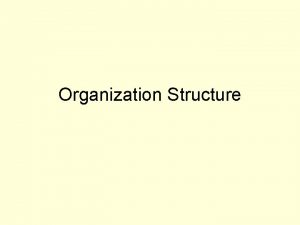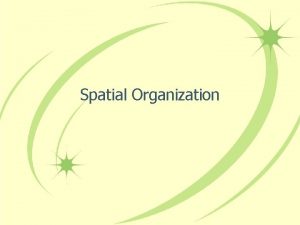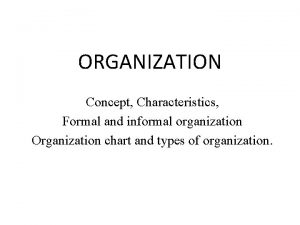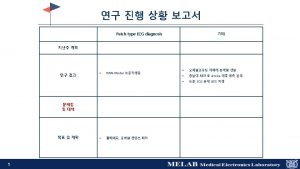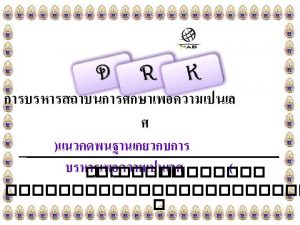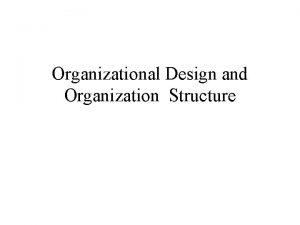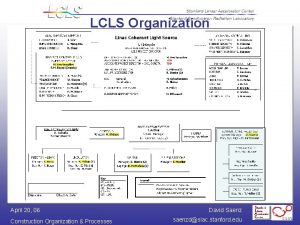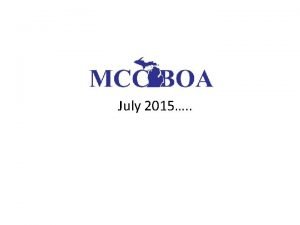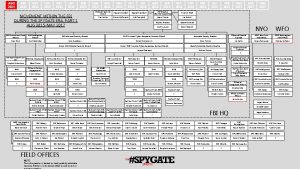The Organization of Campus Development April 13 2015












































- Slides: 44

The Organization of Campus Development April 13, 2015 Antti Ahlava, VP

Ohjelma 1 Avaussanat (Ilkka Niemelä): Alueen kehittämisen tavoitteina käyttäjälähtöisyys ja laaja hankeosapuolten välinen yhteistyö 2 Hankeosapuolten intressit koottuna (AA esittää; ryhmätyönä intressien päivitys) 3 Kampuskehittämisen tapausesimerkkejä (AA) 4 Alueen toimintaympäristön skenaariot (AA alustaa, ryhmätyö) 5 Otaniemen osa-alueet (AA alustaa) 6 Osa-alueiden visiot (AA alustaa, ryhmätyö) 7 Seuraavat vaiheet (AA) 1. 12. 2020 2

Campus Development Organization The Management Groups of Schools Key interface to user participation; public events arranged in collaboration if needed Stakeholders The student unions and other collaborators Vice President, Campus Development Antti Ahlava Campus and Facility Services CAS / KATI Focus: preliminary design & project development Updating university unit location management Financial Campus Management Aalto University Properties AUP / AYK The resources of campus development Choosing consultants Focus: design development Updating real estate development plans CAS: Antti Tuomela CVP: Antti Ahlava Finance: Marianna Bom AUP: Kari Kontturi The Steering Group of Campus Development Workgroup S Workgroup M Workgroup L 1. 12. 2020 3

The Steering Group of Campus Development / Organization Management ü VP (A. Ahlava) ü Real Estate Director (A. Tuomela) ü CEO of University Properties (K. Kontturi) ü AYY Campus chief (S. Nuotio) ü Communications (Elina Ämmälä) Curators of Work Groups (as presenters, not as full members) L Urban Design M Buildings S Interiors Representants of Schools ü ü ü SCI (Ahti Salo) ENG (Esko Niemi) ELEC (Antti Oulasvirta) ARTS (Pekka Saarela) CHEM (Jaana Rich) BIZ (Markku Kuula)

The Steering Group of Campus Development / Tasks Preparing and Participating • Strategy and Resource Dialogues • Reviews • Priorities • Actions Guiding and assessing the work of Workgroups Requesting alternatives within different projects of campus development • Alternatives for different parts of the campus • Alternatives for programmatic and thematic development Coordinating Communicating • Between Workgrpups • Informing the communities about campus development

Workgroups The workgroups consist of the project managers of all of the current design projects of campus development, as well as new managers of certain thematic content areas of campus development. The workgroups do not change the present project design teams and the responsibles of the premises of Schools and departments. The latter remain merely responsible for maintenance. Ideally all project design teams have a student representative! L urban planning & design, landscape, environmental planning and impact & traffic S Renovations M building projects Curator: Esa Santamäki Curator: Satu Kankaala Pauliina Skyttä & Päivi Hietanen: Jarmo Wilander (? ): Rakennuttaminen • • • Tapio Koskinen: Väre (2017), Arabia interior projects & Otakaari 1 (2015) Learning Centre (2015)) Dipoli (2015) Sähkömiehentie 4 (K 4 / ADD, 2017) Puumiehenkuja 5 (K 3, 2018) Otakaari 5 (ELEC, 2018) Satu Kankaala: Metro Shopping Centre (2017) Teemu Leinonen: Media Centre (2016) Curator: Aija Staffans Kari Talvitie: • • Otaniemi general plan and housing Traffic & parking Pauliina Skyttä : Otaniemi general plan and housing Meri Löyttyniemi (Mikko Jalas later? ): Sustainability (Sampsa Hyysalo? ) Fernando Nieto: international community Tuula Isohanni: Campus Art, Spatial Signage & Outdoor Lighting Valeria Gryada: Interior design & International community Kalevi Ekman & Esa Santamäki: Platforms, Factories & Hubs (2017) Liisa Välikangas (? ): Innovation Ecosystem (Mikko Jalas? ) Esa Ahonen: Gastronomy spaces (2015) Martti Mäntylä: Industrial Internet Campus (2017) Leena Plym-Rissanen: International community Pauliina Skyttä: Juanjo Galan & Varpu Mikola: Landscape Architecture Esa Santamäki: Platforms, Factories & Learning Hubs Minttu Moisio (minna-mari. moisio@aalto. fi): Human Resources Saara Maalismaa: Learning Antti Raike: Enabling environment Seija Piiponniemi-Lahti: Security Patrick Jensen (AYY): Students • • Puumies additional building (2017 -18) Material Technology Block / Vuorimiehentie 2 (app. 2019) Peter Leander (AYY): Students Mika Niemi: IT Kari Kontturi: Areal Branding Pyry Haahtela (AYY): Students

How do the Workgroups Work? 1. First Meeting (together with all Workgroups, March 27 th, 2015) • VP Ahlava introduces the idea and aims of the Workgroups • The selection of responsible persons for tasks presently without a manager • Adding possibly missing projects / themes • Selecting the curators of the Workgroups. VP introduces the aims of the projects 2. The Following Meetings • The meetings are held separately in each Workgroup, preferably at least once a month • Updating the group of members • Short presentation of the current status and challenges in each of the projects • Feedback to projects from other members & decisions on follow-up actions • Possible tasks from the Steering Group • The preparation of reports to the Steering Group • New initiatives? • Other follow-up actions 3. The responsibilities of a Chief of a Workgroup • Answers strategic, tactical and technical questions and requests from the community and partners related to the subject area of the Workgroup • Is responsible for the preparation of material for the Steering Group 4. The responsibilities of a Project Manager • Answers strategic, tactical and technical questions and requests from the community and partners related to the project or theme area in campus development 5. What happens between meetings? • The meetings are occasions for discussion. If the Workgroup is working on task given by the Steering Group or on self-assigned tasks, these take place between the meetings by the group or part of its members.

How does the Campus Steering Group work? 1. First Meeting (13. 4. 2015 at 13: 15 -15: 15. ) • VP Ahlava introduces the aims of campus development • VP introduces briefly the aims of each of the campus development projects and the workgroups • Managing Workgroups: Accepting the curators and defining the principles of coordination between the Workgroups 3. The responsibilities of the chairman of the steering group (VP) • Prepares the agenda for meetings • Normative principles and leading stakeholder collaboration • Preparation of material for Pro. ET and PMT 4. The responsibilities of members 2. Other meetingns • The meetings are held once a month • Workgroups: Presentations of the current status and challenges in each of the projects by the three curators, update to the list of members, adding possibly missing projects / themes, defining tasks, actions and priorities • Organising stakeholder collaboration • New initiatives? • Other follow-up actions? • Deciding on communicating about campus development • Acquires a replacement if not able to participate a meeting

When spatial changes are needed 1. Pre-planning (mapping of mutual interests, functional needs etc. ) on department / school level a. Contact and work with the responsible person of your spatial development (“Tilavastaava”) Following this, the next stage – project development – should be accomplished within the new campus development process: 3. The project manager comes from CAS or AUP Gathers other members to the project group (the representatives of the users and consultants. 2. Financing a. Using school / department budget 4. The project is brought to a respective Campus Workgroup b. Following the existing Investment Plan, accepted by the Board of the University in 2014 And next also to the Steering Group of Campus Development c. New resources created through Resource Dialogues d. New investments through new decisions by the President and the Board of the university

Participatory Development Process Aalto University Student Union AYY 1. Interests and vision workshop 2. Letter of intent - reflects to the actors' internal decisions 3. Joint venture? April 24, 2015! Otaniemi Management Team (Land owners & the city) City of Espoo - culture - Business - environment - traffic Senate properties • • International actors Corporate partners from the area Extended participants VTT Technopolis Ministry of Employment and the Economy Energy Sufficient Otaniemi Group (Energiaomavarainen Otaniemi) www. otaviisas. com • • • Local and state administrators Construction companies Real estate investors More corporate and institutional partners from the area Student bodies: Aaltoes, KY, TF etc. Helsinki University and Art University YLE Otaniemi Technology Hub www. otaniemi. fi 1. 12. 2020 10

2 hankeosapuolten intressit koottuna - perustuu julkaistuihin intresseihin - Hankeosapuolten yhteistyö urban design management – menetelmällä


Aalto-yliopiston hallitus (2011) The aim with one main campus (Otaniemi) is to "support the aim of Aalto University as a multidisciplinary and creative university” - luova rakennusten yhteiskäyttö - kandidaattiopetuksen keskittäminen Otaniemeen - tutkimukselle ja taiteelle monipuolinen vuorovaikutusympäristö - kestävä kehitys taloudellisesti ja ekologisesti - kampuksen tiivistäminen - vapaa-ajan ja kulttuurin palveluiden monipuolistaminen (-> ostoskeskus)

Aalto-yliopiston hallitus (2011) • luova rakennusten yhteiskäyttö • kandidaattiopetuksen keskittäminen Otaniemeen a UNI OWN & USE • tutkimukselle ja taiteelle monipuolinen vuorovaikutusympäristö • kestävä kehitys taloudellisesti ja ekologisest • kampuksen tiivistäminen • vapaa-ajan ja kulttuurin palveluiden monipuolistaminen • (-> ostoskeskus) UNI OWN, SHARED USE SHARED OWN, SHARED USE

Aalto-yliopiston henkilöstö ja rehtorin kampusvisio (kampusworkshopien perusteella, 2011) • laadukas, inspiroiva ja monipuolinen oppimisympäristö, jossa valinnan varaa; eristäytymisen, toimintojen eriyttämisen ja autovaltaisuuden vähentäminen • arvokas historia ja uudenlainen suunnittelu rinta rinnan • jaettuja resursseja, yliopiston tiloja avataan entistä paremmin opiskelijoiden käyttöön ja opastejärjestelmiä kehitetään • luomisen prosessit näkyviksi • ympäristö tukee rajojen ylittämistä opetuksessa, taiteessa ja tutkimuksessa • risteyspaikkoja joustavile oppimisen muodoille • elävä työympäristö, jossa työ, vapaa-aika ja palvelut liittyvät kiinteästi toisiinsa. • kestävän kehityksen tavoitteiden saavuttaminen vaatii liikenne- ja energiaratkaisuja • tarve myöhempään ”strategiseen ohjeistukseen” olemassaolevian rakennusten ja ympäristöjen kehittämiseksi ja uusien aikaansaamiseksi

OTANIEMI SCIENCE CLUSTERS (BY DEANS) Industrial internet (ELEC+SCI) BIZ+ (SCI+ARTS) Nanofab (ELEC+VTT)

Harrisonin raportti (2012) • ystävällinen ja autettu saapuminen kampukselle • yliopiston sisäinen tutkimus yksiköiden tilatarpeista • tavoitteena tilojen käytön intensifiointi ja resurssien jakaminen • haasteena nykyisten tilojen soveltuvuus yliopiston käyttöön • korkeakoulujen ja laitosten omien identiteettien säilytttäminen ja vahvistaminen tärkeää (mm. CHEM) • joustavia ja monikäyttöisiä tiloja ja epämuodollisia kohtaamispaikkoja sekä kahviloita pääreittien varrelle, opetustilat risteyskohtiin; aulojen käytön tehostaminen uusilla toiminnoilla • lisää vapaa-ajan tiloja • tapahtuma-ja kokoustiloja kaikille laitokseille • uusi keskeinen opiskelijoiden paikka tarvitaan • kampus liian laaja • yksiköt liian hajallaan toisistaan

Arkkitehtikilpailu Campus 2015 - Alvar Aallon kampuksen arkkitehtuurin arvostaminen - Taiteiden ja suunnittelun korkeakoulun rakennus ja yliopiston ostoskeskus metroasemalle - edelläkävijyys kampuksen kehittämisessä, rohkeus vaikuttaa, avoimuus ja tasa-arvo; kampus tukee yhteistyötä ja vuorovaikutusta elävän ympäristön aikaansaamiseksi - työ ja vapaa-aika kutoutuvat toisiinsa - Kilpailun alueesta tulee yliopiston mentaalinen keskus

Yliopiston johto (Pro. MT & PMT 2015) • Joustava, muutoksia mahdollistava rakenne • Kuitenkin tärkeiden, vaikeasti siirrettävien infrastruktuurien siirrot minimpitu • Koulut ja päiväkodit erottautumistapana • Asukkaita niemen keskelle ennen rantoja

Opiskelijoiden perspektiivi • käyttäjälähtöisyyden vaatimus (AYY 2011, kampusworkshopit) • yhteisöasumista lähellä yliopistoa, luontoarviot huomioon; parkkipaikoille ja metroasemalle opiskelija-asumista (opiskelijaasumisen visiodokumentti 2014)

Poliitikot (Espoon kaupunkisuunnittelulautakunta) • yliopiston metroaseman ympärille keskittyvä kaupunginosa, jolla oma kaupunginosakeskus • tavoitteena maapallonlaajuisesti merkittävä kestävän kehityksen mukaisen hyvinvoinnin kokeilualue • työn, asumisen ja vapaa-ajan tilojen yhdistäminen ja sekoittaminen vuorokauden ja vuoden ympäri • ranta-alueilla huomattava määrä uusia asuntoja pääasiassa yliopistyosn opiskleijoille ja henkilöstölle, ja alueen yritysten henkilökunnalle, luonnon arvokkaat piirteet säilyttäen • metroasemalla sekoittunut kaupunkiympäristö (yeiskaavan mukaisesti keskustatoimintojen aluetta) • henkilöautoliikenteen vähentäminen • ei liityntäpysäköintiä

Viranomaiset • • • RKY-alueen arkkitehtuuri- ja kulttuurihistorialliset arvot luonnonarvot metroaseman ympäristö kaupunginosakeskuksena kaupungin tekemälle liikenneinfrastruktuurisijoitukselle vastinetta innovaatiopuutarha: teknologian ja kulttuurin kasvualusta

GENERAL PLAN FOR OTANIEMI OFFICIAL MASTER PLAN PY Julkisten palvelujen ja hallinnon alue. Asemakaavoitettaessa eri palvelujen tarvitsemat tilat sijoitetaan siten, että ne tukevat toisiaan ja tilojen yhteis- ja vuorottaiska yttoö on mahdollista. Alueelle voidaan sijoittaa palveluasuntoja. C Keskustatoiinnot LS Satama A 1 Kaupunkimainen asuinalue Centre for Economic Development, Transport and the Environment (ELY-keskus)

Alueen yritykset • merkittävän start-up -yritysten alueen synnyttäminen • yliopiston ja yritysten läheisyys ja limittyminen: Otaniemi – Keilaniemi ja Otaniemi – Kehä 1

TEHTÄVÄ Ryhmätyönä intressien päivitys

3 kampuskehittämisen tapausesimerkkejä

l life e v e l d n grou OMA/AMO Central Business District Core, 2007 Creative Campuses

Science City, ETHZ KCAP 2005 - mix atic m m a r g o pr

nd op a y t i r a n i rdiscipl inte Future University of Hakodate Riken Yamamoto 2000 spar n a r t y b enness ency

A street Vienna University, Economics Campus BUS Architects 2008 - Creative Campuses

TEHTÄVÄ: SKENAARIOT Ryhmätyönä intressien päivitys

SCENARIOS predominant university fields on campus ion at nt e m i er xp n e a rb f u e o th od e m the essence of global atrtractivity

SCENARIOS Scenarios for the future societal, cultural and economical context of the campus? How to act as a pioneer in urban development? How to attain global importance? Are the following three future scenarios feasible? What do they mean for the campus? Can you imagine other scenarios? SCENARIO 1: NEW COCKTAILS: The co-effect of technology, usercenteredness and design (e. g. industrial internet / internet of things) accumulates development. There also other inter- and cross-disciplinary breakthroughs, boosting growth. How do these affect the campus as a global hub of human-based innovation and a testbed for its implications?

SCENARIOS SCENARIO 2: BIO CAMPUS: Natural sciences, bio-economy and clean tech will lead the development of the university and its technology-predominant campus in the future. Cleaniness, nature and the contrasts of ultra high tech and wilderness have power. How could this marriage of technology and environment affect the development of the campus and its surrounding region as a global example of future smart city?

SCENARIOS SCENARIO 3: A REAL CITY: Otaniemi will not remain a predominately technology campus. The future of the fields of the university is different, when commerce and design rule. There will be new winners and losers. We can attract also other companies to the campus than only high tech businesses in the future. Which effect does this have to student and staff culture? Otaniemi-Tapiola. Keilaniemi will be the future centre of intelligent urban growth, while the growth of the centres of Helsinki, Stockholm and Copenhagen fades.

SCENARIOS SCENARIO 4: CREATIVE WELFARE SOCIETY: Otaniemi will become a global centre of science and art, attracting multinational companies and investment for creative culture and societal innovation. How will the campus change in this progress? Are these future scenarios feasible? What do they mean for the campus? Can you imagine other scenarios?

Ahlava - Mäkynen - Niemeyer - Sotamaa et al. HIGH-RISE SHUFFLE SOUNDINGS 2010 Antti Ahlava

tead of s n i s m te ided sys ctures, meeting ! v i d , e l b tru ns Flexi ralised s positive collisio t n e c , e , larg Antti Ahlava random r o f s e c pla Ahlava - Mäkynen - Niemeyer - Sotamaa et al. HIGH-RISE SHUFFLE SOUNDINGS 2010

Monofunctional greenfield campus Diversified campus with BOTH greenfield AND new urban development Otaniemi Campus

Otaniemen osa-alueet

Shared resources and programmatic mix on block and street level a – Historical environment with limited possibilities to infill or new functions; however interior and outdoor areas activated with temporary additions and programming c b b – Mixed learning, workplaces, services and housing – old and new mixed – more streetscape and ground floor openings M c – New housing (+ possibly services and workplaces) 350 m = max walk; UNI OWN, SHARED USE d – Mixed old and new, mixed housing, workplaces and services e – Shared learning, services and housing f – University facilities in collaboration with other research institutions SHARED OWN, SHARED USE a UNI OWN & USE M e f d s o n n o lu / t f a Dr

DESIGN FACTORY, STARTUP SAUNA AND FUTURE DIGITAL CENTRE TO MARINE TECHNOLOGY BLOCK YLE collaboration?

TEHTÄVÄ Osa-alueiden visiot - sis. aikajänteet ja roadmap 2040 -2100 -2200 - rakentamisen ja käyttäjien volyymit

Seuraavat vaiheet
 Human development report 2015
Human development report 2015 Brian gough
Brian gough Process organization in computer organization
Process organization in computer organization Point by point vs block organization
Point by point vs block organization Hình ảnh bộ gõ cơ thể búng tay
Hình ảnh bộ gõ cơ thể búng tay Frameset trong html5
Frameset trong html5 Bổ thể
Bổ thể Tỉ lệ cơ thể trẻ em
Tỉ lệ cơ thể trẻ em Chó sói
Chó sói Chụp tư thế worms-breton
Chụp tư thế worms-breton Chúa yêu trần thế
Chúa yêu trần thế Môn thể thao bắt đầu bằng từ chạy
Môn thể thao bắt đầu bằng từ chạy Thế nào là hệ số cao nhất
Thế nào là hệ số cao nhất Các châu lục và đại dương trên thế giới
Các châu lục và đại dương trên thế giới Công thức tính thế năng
Công thức tính thế năng Trời xanh đây là của chúng ta thể thơ
Trời xanh đây là của chúng ta thể thơ Mật thư anh em như thể tay chân
Mật thư anh em như thể tay chân Phép trừ bù
Phép trừ bù Phản ứng thế ankan
Phản ứng thế ankan Các châu lục và đại dương trên thế giới
Các châu lục và đại dương trên thế giới Thể thơ truyền thống
Thể thơ truyền thống Quá trình desamine hóa có thể tạo ra
Quá trình desamine hóa có thể tạo ra Một số thể thơ truyền thống
Một số thể thơ truyền thống Cái miệng nó xinh thế chỉ nói điều hay thôi
Cái miệng nó xinh thế chỉ nói điều hay thôi Vẽ hình chiếu vuông góc của vật thể sau
Vẽ hình chiếu vuông góc của vật thể sau Nguyên nhân của sự mỏi cơ sinh 8
Nguyên nhân của sự mỏi cơ sinh 8 đặc điểm cơ thể của người tối cổ
đặc điểm cơ thể của người tối cổ Thứ tự các dấu thăng giáng ở hóa biểu
Thứ tự các dấu thăng giáng ở hóa biểu Vẽ hình chiếu đứng bằng cạnh của vật thể
Vẽ hình chiếu đứng bằng cạnh của vật thể Vẽ hình chiếu vuông góc của vật thể sau
Vẽ hình chiếu vuông góc của vật thể sau Thẻ vin
Thẻ vin đại từ thay thế
đại từ thay thế điện thế nghỉ
điện thế nghỉ Tư thế ngồi viết
Tư thế ngồi viết Diễn thế sinh thái là
Diễn thế sinh thái là Dot
Dot Số.nguyên tố
Số.nguyên tố Tư thế ngồi viết
Tư thế ngồi viết Lời thề hippocrates
Lời thề hippocrates Thiếu nhi thế giới liên hoan
Thiếu nhi thế giới liên hoan ưu thế lai là gì
ưu thế lai là gì Hươu thường đẻ mỗi lứa mấy con
Hươu thường đẻ mỗi lứa mấy con Sự nuôi và dạy con của hổ
Sự nuôi và dạy con của hổ Hệ hô hấp
Hệ hô hấp Từ ngữ thể hiện lòng nhân hậu
Từ ngữ thể hiện lòng nhân hậu
